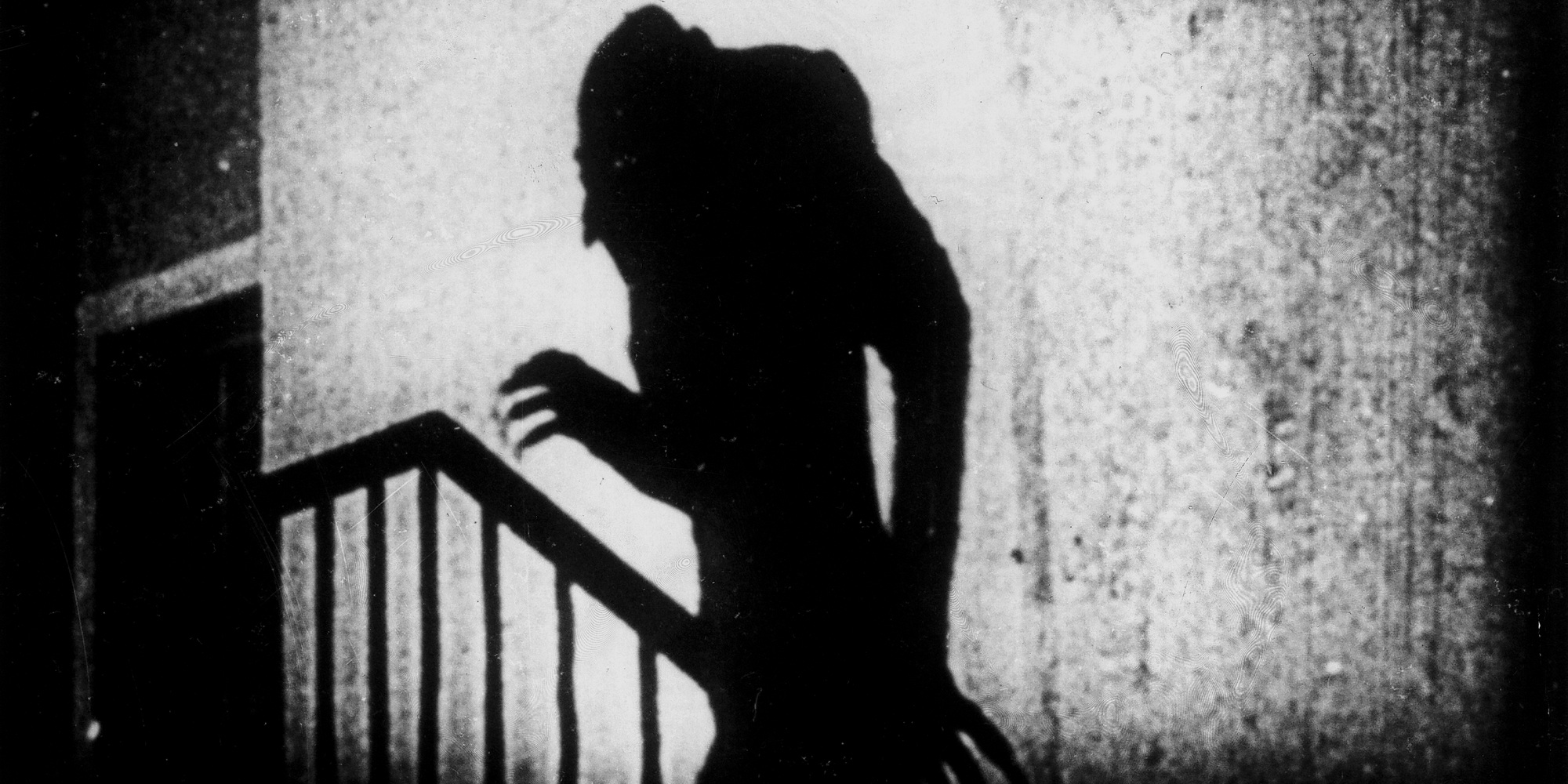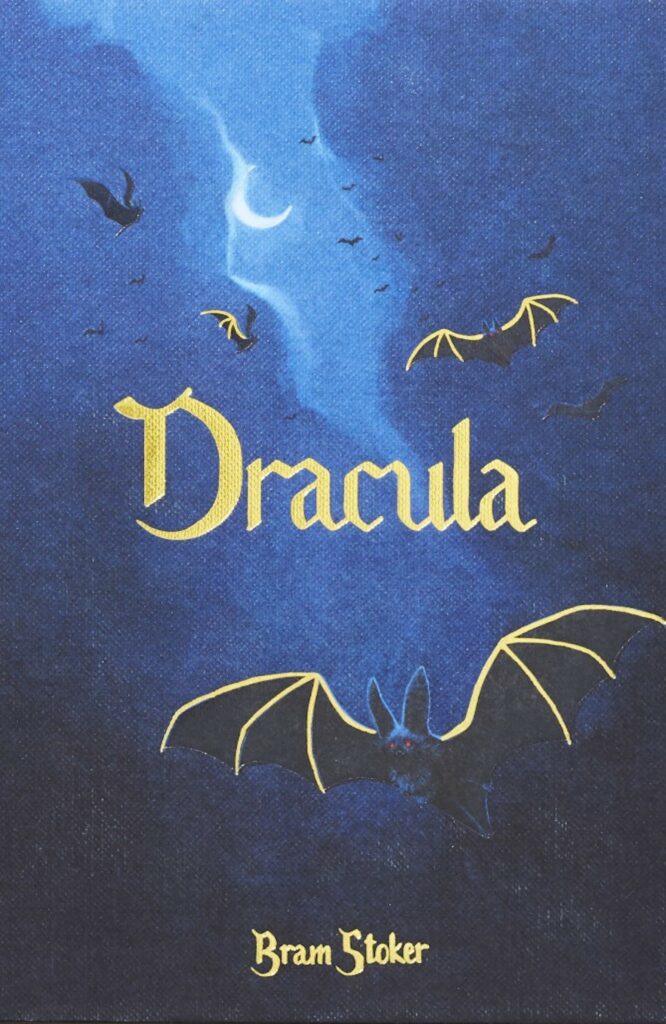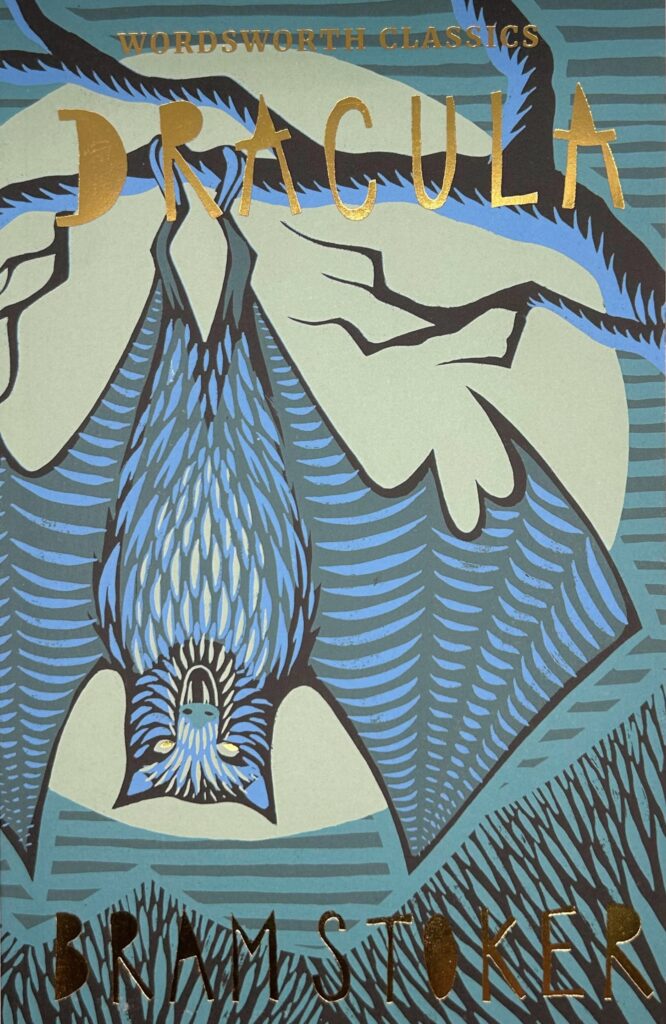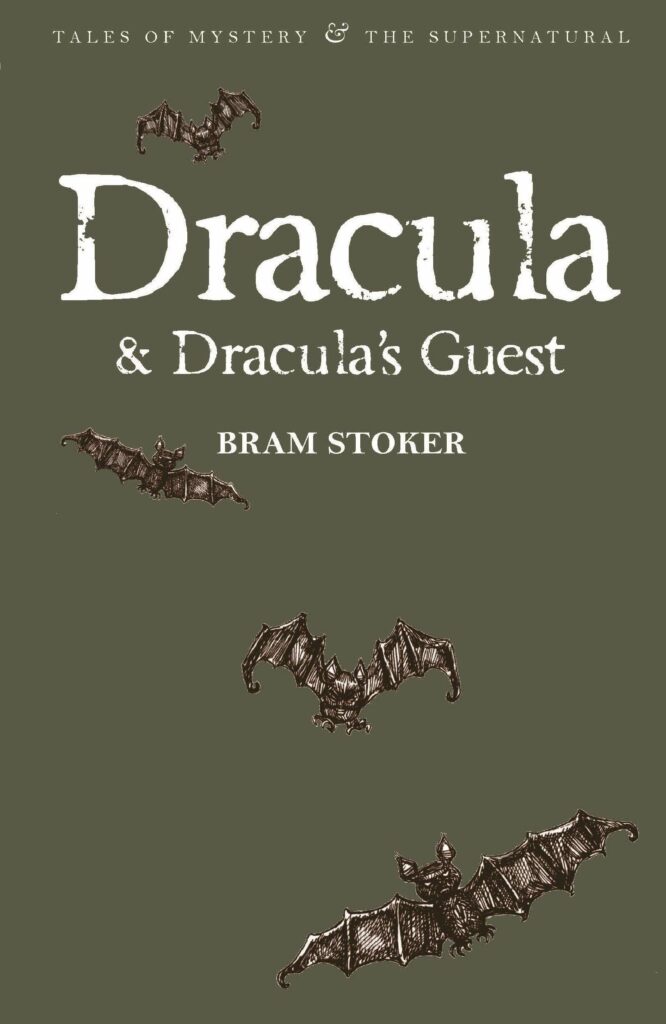
Interpretations of Dracula
David Stuart Davies looks back at the many attempts to portray Dracula, the best-known vampire of them all.
Dracula is one of the most famous characters in all literature and established the image of the human-vampire in popular culture. He is a creature of the night, lying in his coffin during the daylight hours, only to emerge at sunset to suck the blood of the living in order to prolong his tainted life. He was created by the Irish author, Bram Stoker (1847-1912) and the book was published in 1897. It is no coincidence that Dracula is presented as a very theatrical creation for Stoker was the manager of Sir Henry Irving, the most renowned actor of his day. Stoker worshipped this extravagant thespian and imbued many Irving’s characteristics into his vampire creation. Indeed, Stoker attempted to persuade Irving to play the count in a dramatized version of the novel. Irving was not so keen, but reluctantly the actor attended a read-through of the play script, which went on for some five hours. In the end, Irving left hurriedly, bellowing, ‘Dreadful.’
Stoker was greatly dismayed by this response but that certainly was the end of the matter where Irving was concerned. Sadly, Stoker never lived long enough to see his creation on stage. Ironically, it was the cinema which gave the world the first visual presentation of Dracula. This was in the German silent movie Nosferatu, the unauthorised 1922 adaptation of the novel. It was directed by F. W. Murnau and starred Max Shrek. In this version, Dracula was called Graf Orlok who was presented as a monstrous figure with skeletal features, a bald head, claw-like fingernails and vampire fangs which protruded from the very front of his mouth like rat’s teeth. Because the makers of the movie had failed to request permission to use the book and pay for the privilege, Stoker’s widow, Florence, asked for the destruction of all copies of the film. The matter was finally settled in July 1925 when every reel of the movie owned by the film company Prana-Films was destroyed; but of course, several copies survived and now the film is regarded as one of the great classics of horror cinema. Visually it is stunning and Orlok is probably the most chilling interpretation of the part.
In 1928 Universal pictures purchased the film rights of Dracula. The resulting movie was based quite firmly on the stage production, written by Hamilton Deane and John L. Balderston, which had premiered in New York in 1927 and starred the Hungarian actor Bela Lugosi. He expected that the part of Dracula would automatically be offered to him. It was not. Many other actors were considered, some even declining the part. However, Lugosi did eventually secure the role a few weeks before the shooting began, offering to take a very low salary in order to do so.
The opening section of the movie is the most cinematic and effective: Jonathan Harker’s journey through the Carpathian mountains and his arrival at Castle Dracula with the Count waiting for him on the large sweeping cobwebbed staircase still have the power to chill. It is at this moment howling wolves are heard in the forest beyond the castle. Dracula responds with the classic line: ‘Listen to them, children of the night, what music they make.’
Once the scene moves to London, the film betrays its stage roots and becomes rather set-bound. Nevertheless, Lugosi made his mark as Dracula. With his pasty face, slicked-back hair, thick middle-European accent and evening clothes, he became the standard image of Dracula in movies for over twenty years. Lugosi’s last performance as the Count was in the 1948 comedy/horror, Abbott & Costello Meet Frankenstein, although he also appeared in a corny poverty row British movie as a Dracula-like bloodsucker in Mother Riley Meets the Vampire in 1952.
When Hammer films began rejuvenating the old Universal Studios monsters in the ‘fifties, they re-vamped (if you’ll pardon the expression) Dracula and gave him a new suave, handsome and somewhat sexy persona in the shape of Christopher Lee. The 1958 Dracula, with a sleek intense screenplay by Jimmy Sangster, not only has real gothic thrills but also elevates the role of Van Helsing (played brilliantly by Peter Cushing) into that of a vampire-hunting hero – have crucifix and wooden stake, will destroy! Over the next fifteen years, Lee was to return to the role for Hammer in a series of seven films of diminishing quality. The last two even had the Count brought into the modern day of the 1970s.
After the success of the 1958 Dracula there were many movies and TV shows featuring the vampire, but few attempted to use the original novel as the basis of the plot. One television adaptation that did so was first shown in 1977 with the Hollywood actor Louis Jourdan giving a suave, cunning and creepy performance of the Count. Gerald Savoury’s adaptation was remarkably faithful to Stoker’s text and this version remains one of the best.
Also in 1977, the old play was revived on Broadway and remarkably it was a success which inspired a spectacular movie version starring Frank Langella. In this film, old Drac was no longer a creepy ancient guy seeking bloody nourishment, but a handsome Byronesque creature who falls in love with Mina Harker – and she with him. In other words, they turned the story into a romantic drama as did Francis Ford Coppola with his 1992 movie. This version featured Gary Oldman as the original Vlad Tepes Dracula (Vlad the Impaler) who carries across the centuries the pain of the death of his beloved wife. On travelling to London in the late 1800s he encounters Mina Harker and believes that she is a reincarnation of his lost love. It becomes his mission to possess her.
An interesting version was shown on BBC TV in 2006, which presented vampirism as being the result of a disease of the blood. Stewart Harcourt’s screenplay was an interesting take on the old story. The main weakness was the odd casting of Marc Warren as Dracula who was too slight of build and lacked an air of menace.
And now the BBC is having another go at Stoker’s novel. Created by the team behind the Sherlock series, Steven Moffat and Mark Gatiss, their version airs in early January. These writers know their material well and so I’m sure we can expect an exciting feature. I am also sure there will be moments of the unexpected as well as controversial aspects to divide the audience, such as, for example, having a nun taking on the role of Van Helsing. However, for the Dracula purists, there is always the novel.
Main Image: Nosferatu, the 1922 German Impressionist Horror film. Alamy.com
Above: Bela Lugosi, Dracula 1931 and Christopher Lee in the 1958 Hammer film, The Horror of Dracula, both Alamy.com
Finally, Claes Bang in the current BBC adaptation


